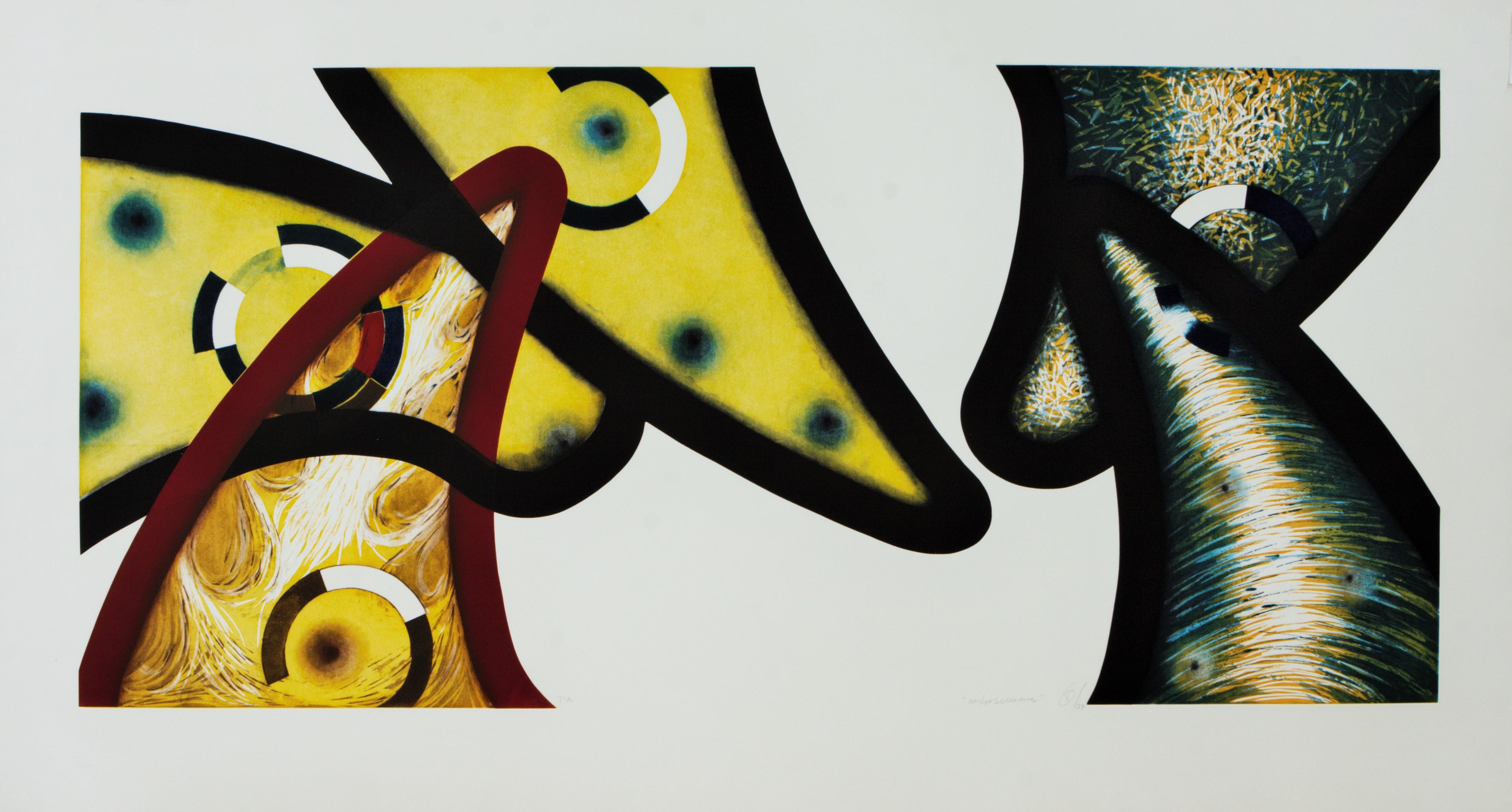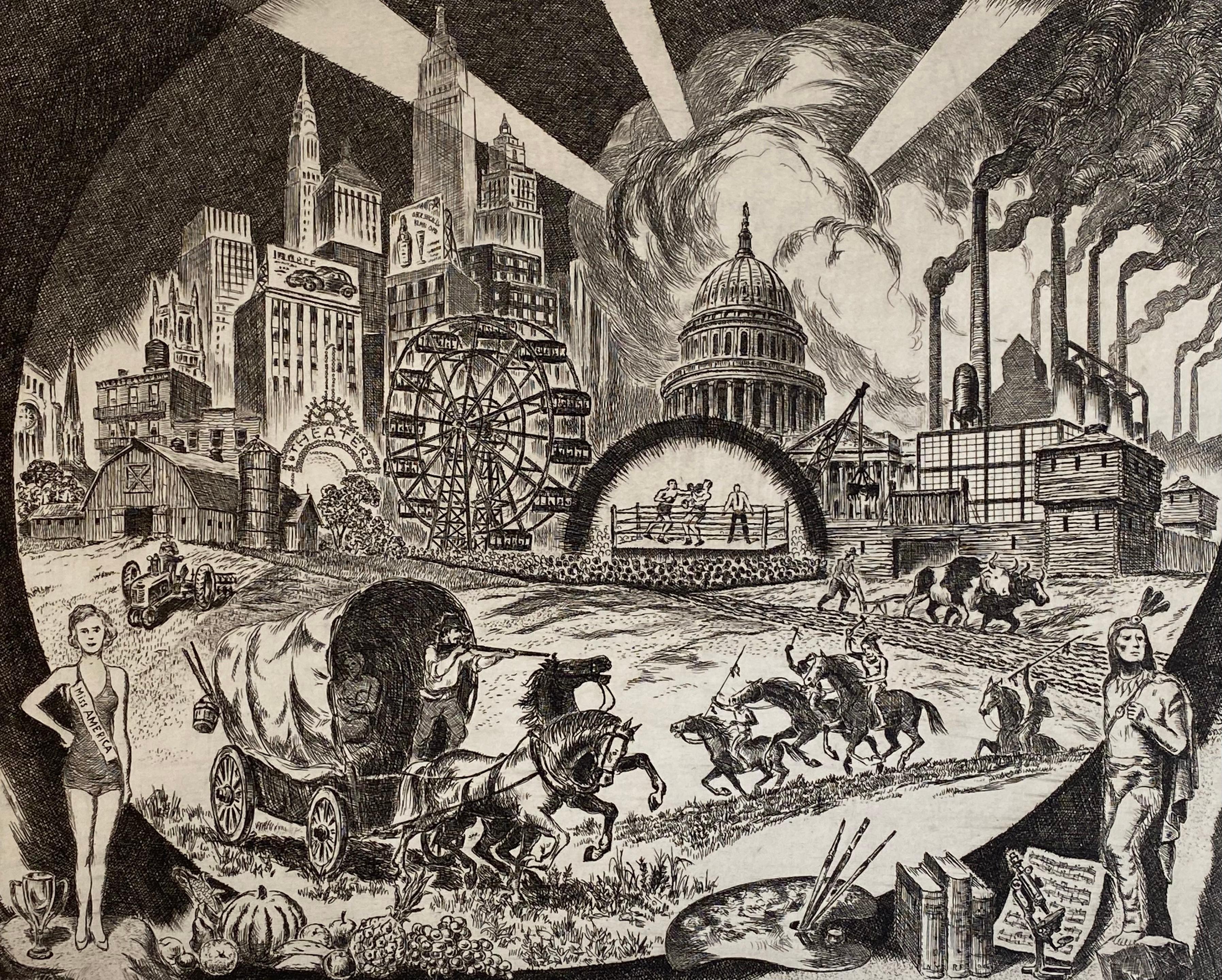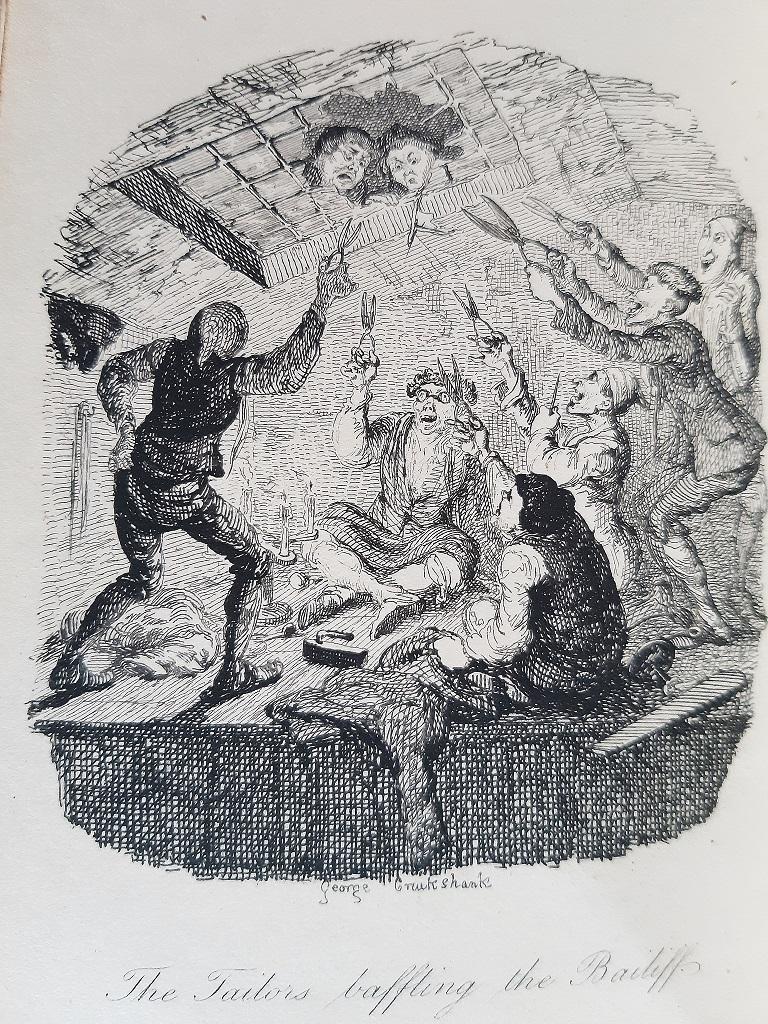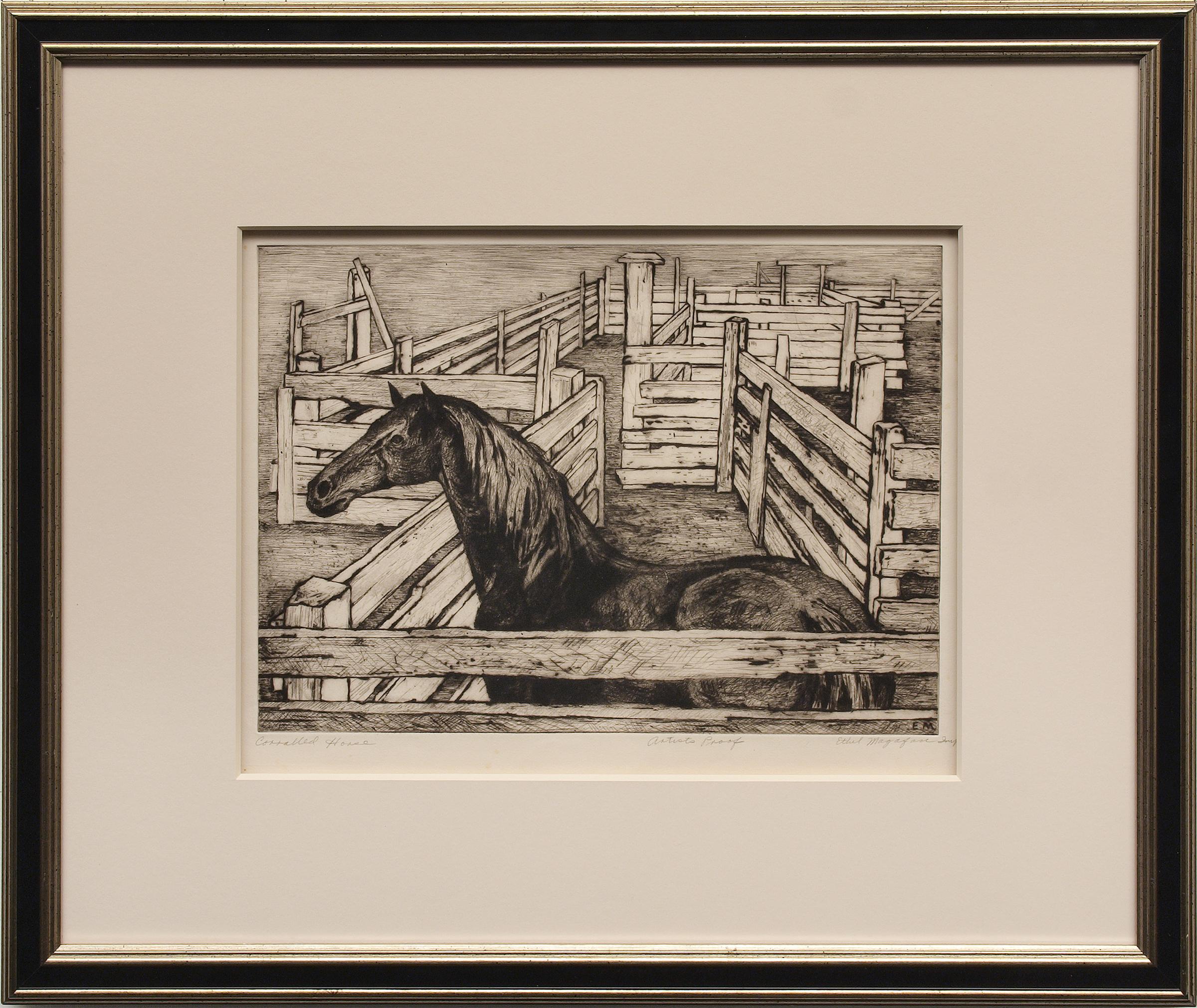Items Similar to Head of a Man - Etching by Gilles Demarteau - 18th Century
Want more images or videos?
Request additional images or videos from the seller
1 of 7
Gilles DemarteauHead of a Man - Etching by Gilles Demarteau - 18th Century18th Century
18th Century
About the Item
Portrait of Man is an old master artwork realized by Gilles Demarteau in the mid-18th Century.
Crayon-manner engraving on paper.
Includes frame.
Inscription: At lower left: f. Boucher in. et del
At lower right: De Marteau lné (né as superscript) Scul. avec privilege
The artwork is after the original painting realized by After François Boucher
- Creator:Gilles Demarteau (1722 - 1776, French)
- Creation Year:18th Century
- Dimensions:Height: 25.6 in (65 cm)Width: 21.26 in (54 cm)Depth: 1.19 in (3 cm)
- Medium:
- Movement & Style:
- Period:
- Condition:Insurance may be requested by customers as additional service, contact us for more information.
- Gallery Location:Roma, IT
- Reference Number:
Gilles Demarteau
Gilles Demarteau or Gilles Demarteau the Elder (19 January 1722, in Liège – 31 July 1776, in Paris) was an etcher, engraver and publisher who was active in Paris for his entire career. He is one of the persons to whom has been attributed the invention of the crayon manner of engraving. He is recognized as playing an important role in the development of this engraving technique. He was one of the key reproductive engravers and publishers of the work of François Boucher.
About the Seller
4.9
Platinum Seller
These expertly vetted sellers are 1stDibs' most experienced sellers and are rated highest by our customers.
1stDibs seller since 2017
6,847 sales on 1stDibs
Typical response time: 3 hours
- ShippingRetrieving quote...Ships From: Grasse, France
- Return PolicyA return for this item may be initiated within 14 days of delivery.
More From This SellerView All
- Adventures of Peregrine Pickle - Rare Book Illustrated by G. Cruikshank - 1831By George CruikshankLocated in Roma, ITThe Adventures of Peregrine Pickle is an original modern rare book written by Tobias George Smollett (Cardross, 1721 – Livorno, 1771) and illustrated by George Cruikshank (London, 1792 - London, 1878) in 1831. Published by J.Cochrane and Co./ J.Andrews, London. Original First Edition. Format: in 12°. The book includes Two Volumes (304 + 340 pages with Eight full page Etchings). Mint conditions. George Cruikshank (London, 1792 - London, 1878) was a British caricaturist and book illustrator, praised as the "modern Hogarth" during his life. His book illustrations for his friend di lui Charles Dickens, and many other authors, reached an international audience. For Charles Dickens, Cruikshank illustrated Sketches by Boz...Category
1830s Modern More Art
MaterialsPaper, Etching
- Fables de La Fontaine - Rare Book Illustrated by Gustave Doré - 1868By Gustave DoréLocated in Roma, ITFables is an original modern rare book Jean de La Fontaine (Château-Thierry, 1621 – Paris, 1695) and illustrated by Gustave Doré (Strasbourg, 1832 – 23 January 1883) in 1868. Publi...Category
1860s Modern Figurative Prints
MaterialsEtching, Paper
- Nude - Etching by Mino Maccari - Mid-20th CenturyBy Mino MaccariLocated in Roma, ITNude is an Etching realized by Mino Maccari in the Mid-20th Century. Hand-signed in the lower right part. Artist'proof. Good conditions. Mino Maccari (Siena, 1924-Rome, June 16, 1989) was an Italian writer, painter, engraver and journalist, winner of the Feltrinelli Prize for Painting in 1963 and first winner of the Forte dei Marmi Satira Prize in 1973.After completing his secondary education, he enrolls in university. An interventionist like many young people of his time, he took part in the Great War at the age of nineteen as a field artillery officer. At the end of the conflict he resumed his university studies in Siena and in 1920 he graduated in law. In 1924 he was called by Angiolo Bencini to take care of the printing of the magazine Il Selvaggio, openly uncompromising fascist, revolutionary and anti-bourgeois, where his first engravings were published. After a few years of coexistence between work at the newspaper and the law firm, at the beginning of 1926 he left the legal profession to take over the direction of Il Selvaggio which he would hold until 1942. In 1928 he was the author of the small book published by Vallecchi (Florence), Il Trastullo di Strapaese (little songs and engraved woodwinds) which collected fascist songs (the same book was seized several times from Antonio Gramsci during his detention). With the transfer of the editorial staff of the Selvaggio in 1925 from Colle di Val d'Elsa to Florence, Maccari collaborated with Ardengo Soffici, Ottone Rosai and Achille Lega. In the meantime, between 1927 and 1930, he made himself known to the general public as a painter by participating in various national exhibitions. Also in 1930 Maccari works in Turin at La Stampa as editor-in-chief and has the writer Curzio Malaparte as director. His presence in the cultural and editorial world of the fascist regime is very intense, he writes and collaborates with various magazines: Quadrivio, L'Italia Letteraria, L'Italiano and Omnibus by Leo Longanesi; then, during the war, in il Primato di Bottai and, subsequently again, in Il Mondo di Pannunzio (from the first number, in 1949), up to Documento by Federigo Valli. His graphic production is also vast, ranging from the Album of Vallecchi (1925), Il trastullo di Strapaese (1928) to Linoleum (1931). Maccari illustrated in 1934 La vecchia del Bal Bullier by Antonio Baldini and in 1942 he published the Album folder, followed by Come quando fuori Piove and Il superfluo illustrata.For his pictorial work full of evident chromatic accentuations and fast brushstrokes, the violent drawing combined with the lively stroke of the graphic sign of his engravings, he is recognized by critics as a complete artist. In 1962 he was also entrusted with the presidency of the Accademia di San Luca in Rome and managed to obtain a personal exhibition at Gallery 63 in New York. His production of drawings, watercolors, temperas, etc. is endless, sometimes in collaboration with prestigious publishing houses; it is worth mentioning, just as an excellent example, the 32 b/w and color drawings with which he illustrated Il gusto di vivere, a volume that collects writings by Giancarlo Fusco, edited by Natalia Aspesi and published by Laterza in 1985. Maccari, Sienese and great contradaiolo della Torre, painted the Palio...Category
Mid-20th Century Modern Figurative Prints
MaterialsPaper, Etching
- The Dance - Etching by Mino Maccari - Mid-20th CenturyBy Mino MaccariLocated in Roma, ITThe Dance is an Etching and Drypoint realized by Mino Maccari in the Mid-20th Century. Hand-signed in the lower right part. Numbered. Edition,3/24. Good conditions. Mino Macc...Category
Mid-20th Century Modern Figurative Prints
MaterialsPaper, Etching
- Nudes - Etching by Mino Maccari - Mid-20th CenturyBy Mino MaccariLocated in Roma, ITNudes is an Etching and Drypoint realized by Mino Maccari in the Mid-20th Century. Hand-signed in the lower right part. Numbered. Edition,6/12. Good conditions. Mino Maccari (...Category
Mid-20th Century Modern Figurative Prints
MaterialsEtching, Paper
- Figures - Etching by Mino Maccari - Mid-20th CenturyBy Mino MaccariLocated in Roma, ITFigures is an Etching and Drypoint realized by Mino Maccari in the Mid-20th Century. Hand-signed in the lower right part. Numbered. Edition,6/16. Good conditions. Mino Maccar...Category
Mid-20th Century Modern Figurative Prints
MaterialsPaper, Etching
You May Also Like
- Victor Guadalajara, "Intersections", 2009, Woodcut 16x12inBy Victor GuadalajaraLocated in Miami, FLVictor Guadalajara (Mexican, 1965) 'Intersecciones', 2009 Woodcut and Aquatint 100.00 x 185 cm. (39.4 x 72.8 in.) Edition of 30 UnframedCategory
Early 2000s Modern Abstract Prints
MaterialsPaper, Ink, Engraving, Etching, Woodcut
- “Americana”By Ralph FabriLocated in Southampton, NYHere for your consideration is a wonderful original etching on archival paper by the well known American artist, Ralph Fabri. Strong impression; signed in pencil by the artist lower right margin. Titled and dated bottom left of the sheet “1947-Americana”. Condition of the etching is excellent. Top corner of sheet and bottom right corner of sheet have tiny creases. Not visible, under the mat. Sheet size is 12 by 15 inches. Image size is 8 by 9.75 inches. Matted but not framed. Provenance: A Long Island, New York collector. Painter and printmaker, commercial artist, writer, and teacher, Ralph Fabri was born Fabri Reszo in Hungary in 1894. He was educated in Budapest, first studying architecture at the Royal Institute of Technology from 1912 to 1914. He then enrolled in the Royal Academy of Fine Arts, from which he graduated in 1918 with a Professor's Diploma (M.A.) "for teaching drawing, painting and geometry – including descriptive and projective geometry – in schools of higher education." Fabri arrived in New York City in 1921 and soon adopted the anglicized version of his name, Ralph Fabri. He began doing commercial design work and during the academic year of 1923/24 was enrolled as an evening student at the National Academy of Design. After becoming an American citizen in 1927, he traveled extensively in Europe. Upon returning to New York that same year, Fabri decided his financial situation was stable enough to allow him to focus his attention on fine art. During the Great Depression, Fabri's already inadequate portrait commissions and art sales further declined and he returned to commercial work. He established a workshop known as the Ralph Fabri Studios, that designed theatrical and movie sets, window displays, and retail interiors. But Fabri found the workshop dirty and distasteful, and eventually was able to concentrate on advertising work which could be done from home. The largest clients for his pen and ink drawings were The Stamp and Album Co. of America, Inc. (for which he designed covers for stamp albums and produced illustrations for envelopes housing sets of stamps sold to collectors), Geographica Map Co., and Joseph H. Cohen & Sons (for whom he designed and illustrated mail order catalogs). Another source of income during this period was the design and construction of an addition to "Iroki," Theodore Dreiser...Category
1940s American Modern Figurative Prints
MaterialsArchival Paper, Etching
- Corralled Horse (Artists Proof), 1940s Framed American Modernist Horse EtchingBy Ethel MagafanLocated in Denver, CO"Corralled Horse", is an etching on paper by western artist Ethel Magafan (1916-1993) of a single dark horse standing outside in a wooden fenced corral. Presented in a custom frame, outer dimensions measure 19 x 23 inches. Image size is 10 x 14 inches. This is marked as an Artist Proof Piece is in very good condition - please contact us for a detailed condition report. Provenance: Estate of Artist, Ethel Magafan Expedited and international shipping is available - please contact us for a quote. About the Artist: Ethel Magafan Born 1916 Died 1993 The daughter of a Greek immigrant father and a Polish immigrant mother who met and married in Chicago, Ethel Magafan, her identical twin sister Jenne and their elder sister Sophie grew up in Colorado to which their father relocated the family in 1919. They initially lived in Colorado Springs where he worked as a waiter at the Antlers Hotel before moving to Denver in 1930 to be head waiter at the Albany Hotel. Two years later during the Great Depression Ethel and Jenne experienced at sixteen the tragic loss of their father who had encouraged their artistic aspirations. He was proud when Ethel, a student at Morey Junior High School, won top prizes in student poster contests sponsored by the Denver Chamber of Commerce and the Denver Post. At East High School in Denver she and Jenne contributed their art talents to the school’s and by their senior year were co-art editors of the Angelus, the 1933 yearbook. At East they studied art with Helen Perry, herself a student of André Lhote in Paris and the Art Institute of Chicago. Her decision to abandon an arts career to teach high school students served as an important example to Ethel and Jenne, who early on had decided to become artists. In a city-wide Denver competition for high school art students Ethel won an eighteenweek art course in 1932-33 to study at the Kirkland School of Art which artist Vance Kirkland had recently established in the Mile High City. Perry encouraged the Magafan twins’ talent, exposing them to the work of Matisse, Picasso and Cézanne and introducing them to local artists and architects like Frank Mechau and Jacques Benedict whom she invited to speak in her high school art classes. She paid the modest tuition for Ethel and Jenne to study composition, color, mural designing and painting at Mechau’s School of Art in downtown Denver in 1933-34. In the summer of 1934 and for a time in 1936 they apprenticed with him at his studio in Redstone, Colorado. When they returned to Denver in 1934 with no family breadwinner to support them, their mother insisted that they have real jobs so they worked as fashion artists in a Denver department store. When Jenne won the Carter Memorial Art Scholarship ($90.00) two years later, she shared it with Ethel so that both of them could enroll in the Broadmoor Art Academy (now the Colorado Springs Fine Arts Center) where they studied with Mechau. When the scholarship money ran out after two months, he hired them as his assistants. Along with Edward (Eduardo) Chavez and Polly Duncan, they helped him with his federal government mural commissions. At the Fine Arts Center Ethel also studied with Boardman Robinson and Peppino Mangravite, who hired her and Jenne in 1939 to assist him in his New York studio with two murals commissioned for the post office in Atlantic City, New Jersey. Like their Denver high school art teacher, Robinson also stressed the need to draw from nature in order to "feel" the mountains, which later become the dominant subject matter of Ethel’s mature work after World War II. Mechau trained her and her sister in the complex process of mural painting while they studied at the Colorado Springs Fine Arts Center, teaching them the compositional techniques of the European Renaissance masters. This also involved library research for historical accuracy, small scale drawing, and Page 2 of 4 the hand-making of paints and other supplies. Ethel recalled that their teacher "was a lovely man but he was a hard worker. He drove us. There was no fooling around." Her apprenticeship with Mechau prepared her to win four national government competitions, beginning at age twenty-two, for large murals in U.S. post offices: Threshing – Auburn, Nebraska (1938), Cotton Pickers – Wynne, Arkansas (1940), Prairie Fire – Madill, Oklahoma (1940), and The Horse Corral – South Denver, Colorado (1942). In preparation for their commissions Ethel and her sister made trips around the country to pending mural locations, driving their beat-up station wagon, dressed in jeans and cowboy boots with art supplies and dogs in tow. She and Jenne combined their talents in the mural, Mountains in Snow, for the Department of Health and Human Services Building in Washington, DC (1942). A year later Ethel executed her own mural, Andrew Jackson at the Battle of New Orleans, January 8, 1814, for the Recorder of Deeds Building, also in Washington, DC. Her first mural commission, Indian Dance, done in 1937 under the Treasury Department Art Project for the Senate Chamber in the United States Capitol, has since disappeared. Ethel and her sister lived and worked in Colorado Springs until 1941 when their residence became determined by the wartime military postings of Jenne’s husband, Edward Chavez. They moved briefly to Los Angeles (1941-42) and then to Cheyenne, Wyoming, while he was stationed at Fort Warren, and then back to Los Angeles for two years in 1943. While in California, Ethel and Jenne executed a floral mural for the Sun Room of the Beverly Hills Hotel and also painted scenes of the ocean which they exhibited at the Raymond and Raymond Galleries in Beverly Hills. While in Los Angeles they met novelist Irving Stone, author of Lust for Life, who told them about Woodstock, as did artists Arnold Blanch and Doris Lee (both of whom previously taught at the Colorado Springs Fine Arts Center school. In summer of 1945 Ethel, her sister and brother-in-law drove their station wagon across the country to Woodstock which became their permanent home. A year later Ethel married artist and musician, Bruce Currie, whom she met in Woodstock. In 1948 with the help of the GI Bill they purchased an old barn there that also housed their individual studios located at opposite ends of the house. The spatial arrangement mirrors the advice she gave her daughter, Jenne, also an artist: "Make sure you end up with a man who respects your work…The worst thing for an artist is to be in competition with her husband." In 1951 Ethel won a Fulbright Scholarship to Greece where she and her husband spent 1951-52. In addition to extensively traveling, sketching and painting the local landscape, she reconnected with her late father’s family in the area of Messinia on the Peloponnese peninsula in southern Greece. At the same time, her sister Jenne accompanied Chavez on his Fulbright Scholarship to Italy where they spent a productive year painting and visiting museums. Shortly after returning home, Jenne’s career was cut tragically short when she died of a cerebral hemorrhage at age thirty-six. It deeply affected Ethel whose own work took on a somber quality for several years conveyed by a darkish palette, as seen in her tempera painting, Aftermath (circa 1952). In the 1940s Ethel and her sister successfully made the important transition from government patronage to careers as independent artists. Ethel became distinguished for her modernist landscapes. Even though Ethel became a permanent Woodstock resident after World War II, from her childhood in Colorado she retained her love of the Rocky Mountains, her "earliest source of my lifelong passion for mountain landscape." She and her husband began returning to Colorado for annual summer camping trips on which they later were joined by their daughter, Jenne. Ethel did many sketches and drawings of places she found which had special meaning for her. They enabled her to recall their vital qualities which she later painted in her Woodstock studio, conveying her feeling about places remembered. She also produced a number of watercolors and prints of the Colorado landscape that constituted a departure from the American Scene style of her earlier paintings. Her postwar creative output collectively belongs to the category of landscape abstractionists as described by author Sheldon Cheney, although to a greater or lesser degree her work references Colorado’s mountainous terrain. She introduced a palette of stronger pastels in her paintings such as two temperas, Evening Mountains from the 1950s and Springtime in the Mountains from the early 1960s. In 1968 she was elected an Academician by the National Academy of Design in New York. Two years later, based on results of her many summer trips to Colorado, the U.S. Department of the Interior invited her to make on-the-spot sketches of the western United States, helping to document the water resources development and conservation efforts by the Department of the Interior. Her sketches were exhibited at the National Gallery in Washington, DC, and then sent on a national tour by the Smithsonian Institution. Similarly, her previous work as a muralist earned her a final commission at age sixty-three for a 12 by 20 foot Civil War image, Grant in the Wilderness, installed in 1979 in the Chancellorsville Visitors Center at the Fredericksburg National Military Park in Virginia. In the 1970s, too, she taught as Artist-in-Residence at Syracuse University and at the University of Georgia in Athens. Her many awards include, among others, the Stacey Scholarship (1947); Tiffany Fellowship (1949); Fulbright Grant (1951-52, in Greece with her husband); Tiffany Fellowship (1949); Benjamin Altman Landscape Prize, National Academy of Design (1955); Medal of Honor, Audubon, Artists (1962); Henry Ward Granger Fund Purchase Award, National Academy of Design (1964); Childe Hassam Fund Purchase Award, American Academy of Arts and Letters (1970); Silver Medal, Audubon Artists (1983); Champion International Corporation Award, Silvermine Guild, New Canaan, Connecticut (1984); John Taylor Award, Woodstock Artists Association, Woodstock, New York (1985); Harrison Cady...Category
1940s American Modern Figurative Prints
MaterialsEtching, Paper
- The Tragedy /// Modern Female Artist Children Child Cute Toy Childhood EtchingBy Eileen SoperLocated in Saint Augustine, FLArtist: Eileen Alice Soper (English, 1905-1990) Title: "The Tragedy" *Signed by Soper in pencil lower right Year: 1922 Medium: Original Etching on cream laid paper Limited edition: 264 Printer: Likely printed by Eva Soper, London, UK Publisher: H C Dickens, London, UK Reference: "The Catalogue Raisonne of Prints and Etchings of George and Eileen Soper" - Beetles No. 31, page 111, 141, 155 Sheet size: 9.13" x 5.5" Image size: 3.88" x 6" Condition: Remnants of previous mounting tape at right edges. In excellent condition Notes: Provenance: private collection - Boulder, CO. Biography: Eileen Soper was born in 1905 in the Municipal Borough of Enfield and moved to the house where she was to spend the rest of her life in Harmer Green, Welwyn in the Hertfordshire countryside in 1908. The house she later named "Wildings" was built by her father, the artist George Soper...Category
1920s Modern Figurative Prints
MaterialsIntaglio, Laid Paper, Etching
- Fiesole, an Ancient TowerBy John Taylor ArmsLocated in Middletown, NYEtching on antique cream laid paper, 7 7/8 x 5 1/8 inches (201 x 130 mm), full margins. Edition of 150. Printed by Federick Reynolds. Signed and dated in pencil, lower right. Arms wa...Category
Early 20th Century American Modern Landscape Prints
MaterialsHandmade Paper, Laid Paper, Etching
- San Marino (Sketch)By John Taylor ArmsLocated in Middletown, NYEcthing in black ink on cream laid paper with a partial watermark, full margins. In excellent condition. A very scarce work from an edition of less than 20 impressions. Signed, date...Category
Mid-20th Century American Modern Landscape Prints
MaterialsLaid Paper, Etching
Recently Viewed
View AllMore Ways To Browse
18th Century Head
Frame Print 18th Century
Boucher Antique
Boucher Francois
After Boucher
F Boucher
Jean Cocteau Plates
Jean Michel Basquiat Poster
Jewish Wedding Painting
Luigi Mayer
Matisse Screen Print
Set Color Block Prints
Signed Theater Poster
Swiss Stained Glass
Vintage Blake Print
Andy Warhol Prints Marilyn Monroe
Antique Wine Prints
Famous African American Abstract Artist






